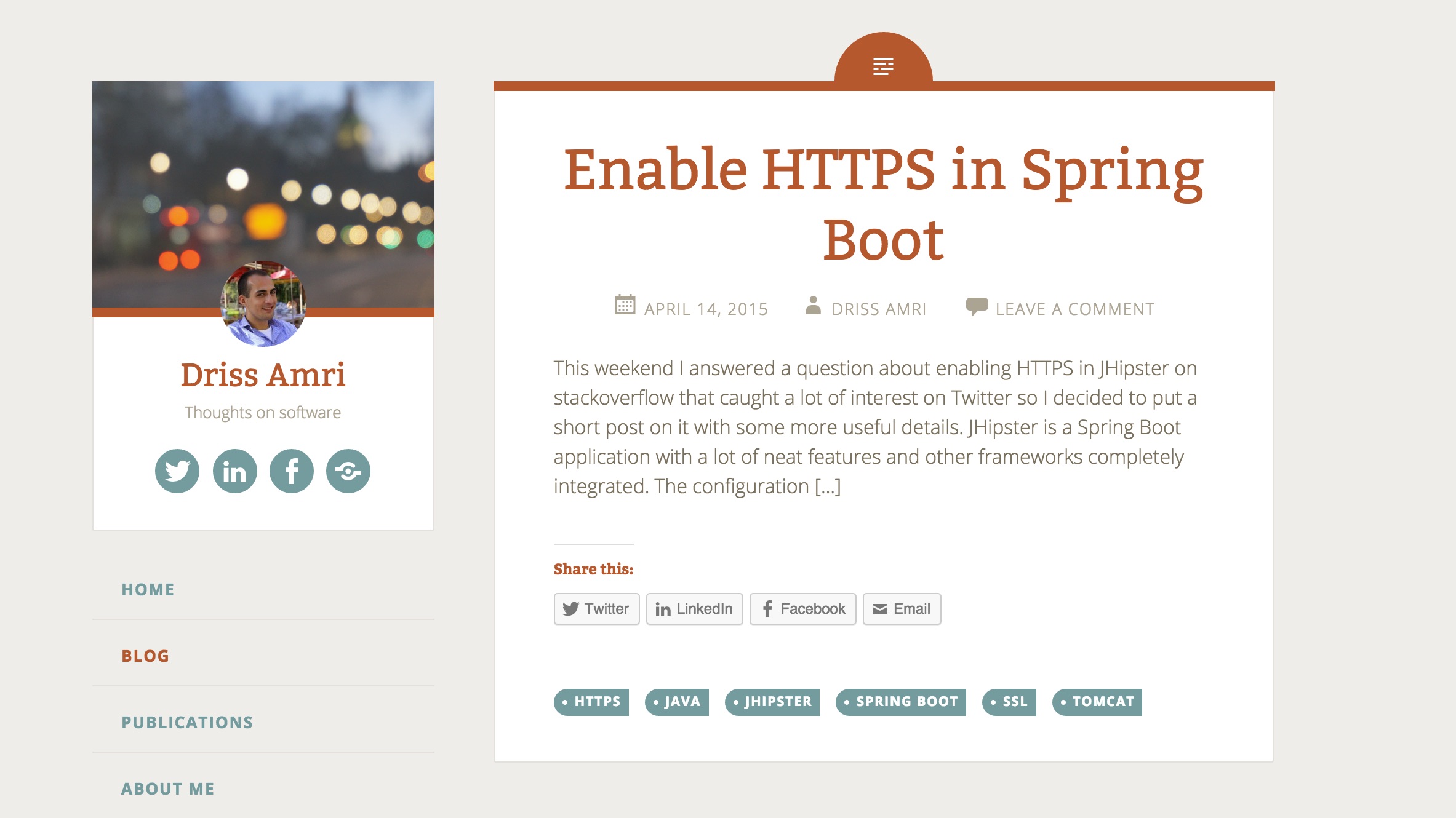Welcome to the new and (hopefully) improved drissamri.com v2.0. I launched v1.0 of my website around October 2014. Most people I knew that had a website were using WordPress, so to get started quickly I went with that. While WordPress is great, it’s a bit of a heavy weight solution for a small site like this.
If you have been here before, you’ll notice the site has gone through a complete overhaul. It used to be a WordPress site with a tweaked Fictive theme:

Why switch?
If you have been following the news, there were quite some WordPress security problems lately. It seemed like every day you had to update because a new problem came up. I realized I spent more time this month on maintaince rather than actual creating content. For a simple site this I didn’t want to manage such a heavyweight solution anymore.
Hello Jekyll!
Last week I decided to play around with a great lightweight static site generator: Jekyll.
For those that don’t know Jekyll:
Jekyll is a simple, blog-aware, static site generator. It takes a template directory containing raw text files in various formats, runs it through a converter (like Markdown) and Liquid renderer, and spits out a complete, ready-to-publish static website suitable for serving with your favorite web server.
You see more and more people trade in their WordPress with a static site generator like Jekyll. This completely makes sense for performance of a site like this, since most of the content is static. No more security updates every week, no more database, no more unnecessary maintenance.
Even better, you can get a Jekyll site hosted for FREE on GitHub pages. This week I’ll be posting a little overview of the steps I did to make the switch to Jekyll on GitHub pages. If you are interested what the source of this site look like, take a look on GitHub.